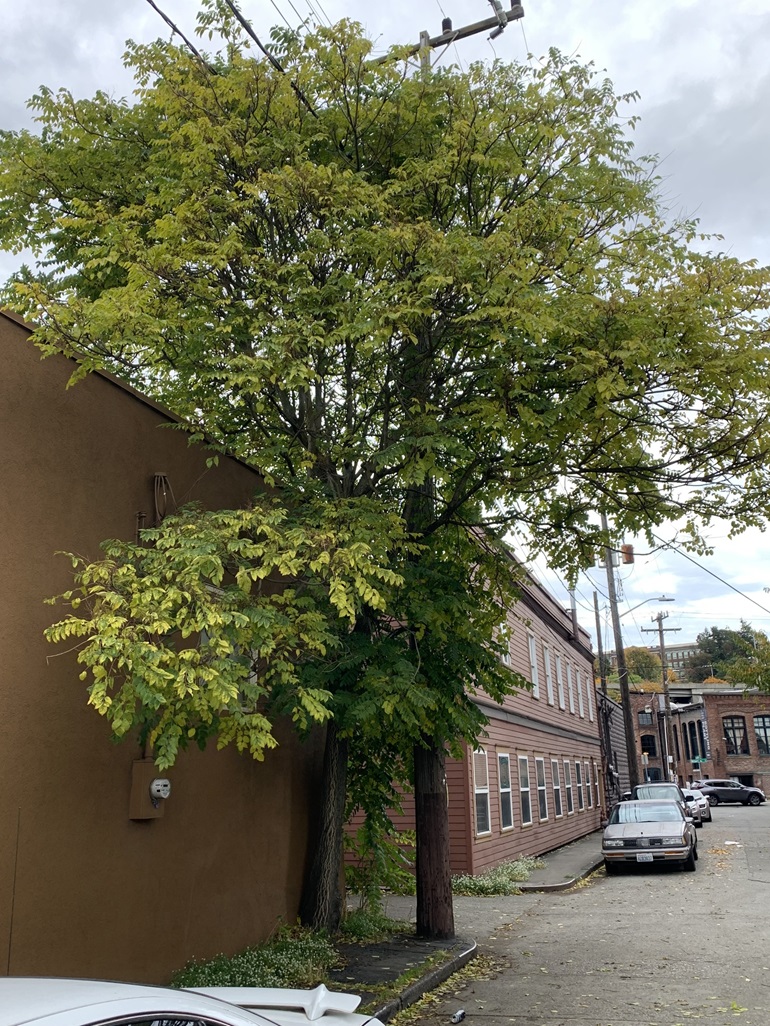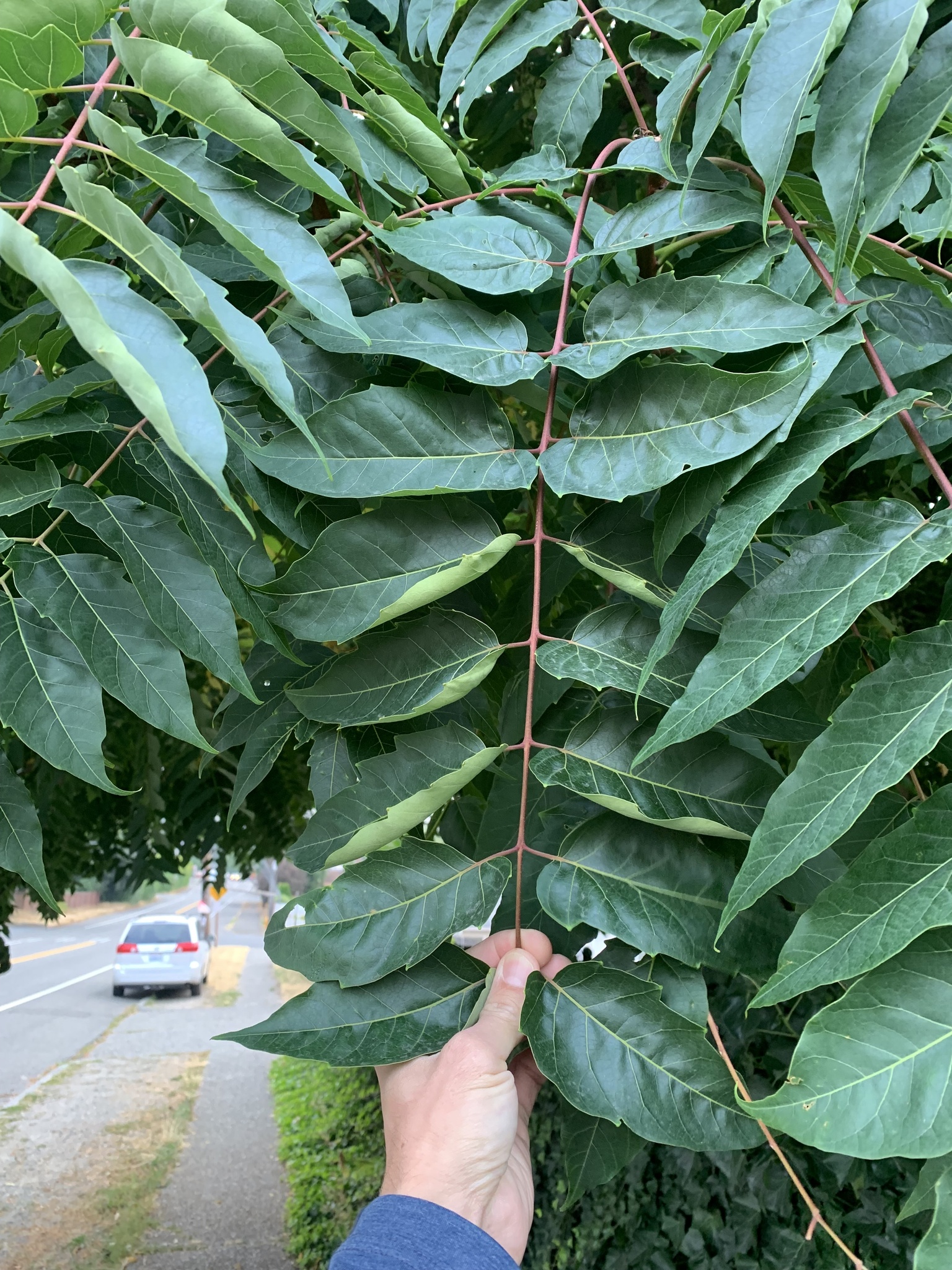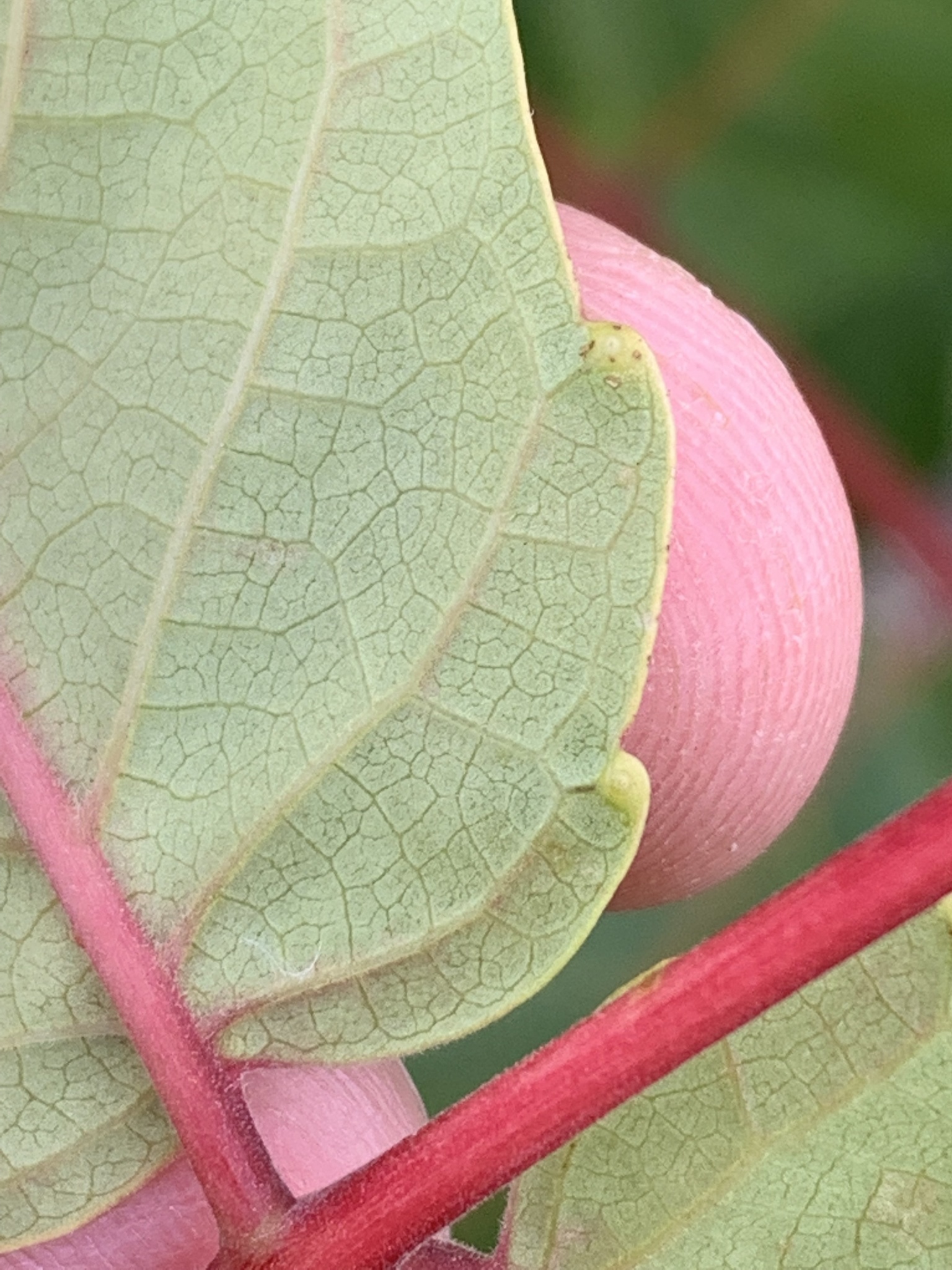Tree of heaven identification and control
Information about the noxious weed tree-of-heaven. Tree-of-heaven is also known by its Latin name, Ailanthus altissima.
About this weed
Tree-of-heaven is a non-regulated Class C noxious weed. This means due to how widespread it is, King County property owners are not required to control this tree on their property, though it is encouraged. Tree-of-heaven is also on the Washington quarantine list and it is illegal to buy, sell or offer it for sale in the state.
Tree-of-heaven is known as Ailanthus altissima and it is in the quassia family. It is also known as stinking quassia and copal-tree. Its native range is in China and Taiwan

Why it's a problem
In King County, tree-of-heaven can reach 90 feet in height and grows well in a variety of habitats including both open and shaded areas. It spreads quickly by seed. It can also reproduce by roots and cut stems and branches left on the ground that resprout into new trees. Simply cutting the tree down will encourage new sprouts to grow.
Tree-of-heaven grows quickly. It is notorious for its ability to exploit cracks in concrete and other similar materials and thrive in extreme and exposed settings. Tree-of-heaven can introduce chemicals into the soil that are toxic to neighboring native plants (allelopathy).
Tree-of-heaven is a preferred host for the spotted lanternfly. Spotted lanternfly is a pest that could severely impact several of Washington’s staple crops. Without preventative management spotted lanternfly will likely establish in the Western United States
Plant description
Tree-of-heaven is a fast growing, medium to large-sized deciduous (plant that loses its leaves annually) tree. It can grow as a single stem or create dense thickets from roots suckers (plant spreading and sprouting new shoots from the root system).
The leaves are pinnately compound (many leaflets comprise one leaf), alternate (leaves which grow staggered, without a pair on the stem), and spirally arranged around stems. The easiest and fastest way to identify tree-of-heaven is to locate the teeth at the base of the leaflet’s edge that have glands (wart or blister-like feature) on the lower surface of the leaflet. Look-a-likes do not have these features.
Tree-of-heaven’s flower clusters are light green to cream colored, develop at the end of branches, and are nearly a foot wide. In the fall, female trees develop clusters of seed pods (samaras) that are loosely twisted and have one centrally placed seed. In the winter, bark is identifiable as generally smooth and gray, that develops shallow, diamond-shaped divots as it ages.




Be aware of look-alike plants
Tree-of-heaven may be confused with other trees and shrubs in use in local ornamental landscapes. Tree-of-heaven is most often confused with a few different types of walnut tree (Juglans spp.) due to similar leaf arrangement, height, and habitat. Walnuts have serrated leaflet edges (margins), while tree-of-heaven has smooth margins with teeth with glands near the base. In open areas, walnut tree crowns are broad, round and even, whereas tree-of-heaven’s can be uneven and cylindrical.
It may also be confused with another locally cultivated shrub, staghorn sumac (Rhus typhina). Young stems of staghorn sumac are fuzzy, and the leaflets are serrated, whereas tree-of-heaven has smooth margins with teeth with glands near the base. In maturity, staghorn sumac’s trunks are crooked and leaning, whereas tree-of-heaven’s trunks mostly appear with a single axis and upright.
When in doubt, take photos and report them on iNaturalist or EDDMapS.
What to do if you find it
Because tree-of-heaven can be expensive and labor intensive to remove, property owners in King County are not required to control it. Due to its status as a host for spotted lanternfly, both the Washington Invasive Species Council and Washington State Department of Agriculture are actively tracking populations and we are interested in King County locations.
We can provide advice on how to control tree-of-heaven, but there is generally no legal requirement to do so. The King County Noxious Weed Control Board encourages property owners to remove tree-of-heaven where possible, and to avoid introducing it to new landscapes.
Control methods
We recommend using a combination of methods to control noxious weeds. In areas with few weeds, it is important to act quickly before they become harder to control. Make a long-term plan as it often takes several years to get rid of most weeds. Start in the least infested areas first and then move into more heavily infested areas.
Manual control
Seedlings and very small plants can be pulled or dug up. A large weed puller such as a Weed Wrench™ or Uprooter type tool works well for small to medium stems. It is important to remove all roots as fragments left in the soil may resprout.
Weed Wrenches™ and other tools can be borrowed from tool libraries in the region.
Larger trees have deep and extensive roots. Digging is labor-intensive and results in considerable soil disturbance if all the roots are removed.
Mechanical control
Cutting tree-of-heaven at the base usually results in re-sprouting from the crown and side roots. This can result in increased overall stand density. With monitoring and follow-up, cutting can temporarily suppress seed production of tree-of-heaven. This is a short-term plan until an effective IPM approach is utilized to fully suppress regrowth.
Cultural control
It may be possible to shade out and discourage establishment of tree-of-heaven seedlings by establishing a thick canopy of trees or a dense grass sod.
Biological control
Grazing can reduce the number of tree-of-heaven stems and weaken the roots. However, it isn’t a long-term solution as it doesn’t address the vigorous root system.
Chemical control
For trees that are too large to pull or dig up, the most effective method is to apply herbicide directly to the live wood area of the trunk of actively growing plants. You can use the cut stump or frilling methods with an herbicide such as triclopyr, imazapyr, or glyphosate. Or you can use an injection lance with imazapyr herbicide bullets. Foliar herbicide treatment is very effective when trees are small and in leaf.
See the PNW Pest Management Handbook for the most up to date and specific method for chemical control of tree-of-heaven.
Stay safe when using herbicide:
- Always read the label before use.
- Wear a long-sleeved shirt, long pants, shoes, and eye protection.
- Follow state and local regulations.
Avoid spraying where there is a chance that herbicide will enter a waterway or wetland unless you are using a state-approved aquatic herbicide and have the required permits and licenses to do so. Use of pesticides in water is regulated in Washington state. See Washington Department of Ecology Aquatic Pesticide Permits for details.
For more information or a site-specific recommendation in King County, contact the noxious weed program. For information in other locations, contact your local weed board or extension office.
Disposal instructions
Freshly cut Tree-of-heaven branches will form roots if they contact the ground. Pile tree-of-heaven stems on downed logs, brush piles, or other elevated surfaces so stems will dry out.
If creating piles on-site is not an option, dispose of tree-of-heaven stems in yard waste bins or take to a transfer station. Home compost may not have a high enough temperature required to kill the seeds so composting trees with seeds is not recommended.
Washington State Noxious Weed Control Board pamphlet on noxious weed disposal

 Translate
Translate